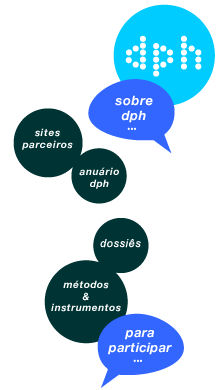The practice of intensive forms of shrimp farming has had negative social, ecological and economic repercussions in several countries of the developing world.
Multi-lateral development banks and bilateral development assistance agencies share a substantial portion of the blame for the ecological and social damage that has been generated by the blind rush into shrimp aquaculture in Latin America and Asia-particularly the World Bank and Asian Development Bank (ADB). The overall structure of development and investment in shrimp farming was initially directed by the development banks in co-operation
with national banks, and bilateral aid agencies. These entities acted as catalysts for private sector investment.
It is not known precisely how much development banks have invested in shrimp aquaculture in tropical countries since becoming active in the sector in the 1970s when loans were offered to governments of Asia and Latin America for development of shrimp ponds. The World Bank financed development projects in Indonesia, the Philippines, Thailand and Bangladesh. By the 1980s the World Bank had broadened its support to include China, India, Brazil, Columbia and Venezuela. The Bank’s involvement in lending to shrimp aquaculture development in Latin America and Asia intensified despite the fact that its officials were fully aware at the time of the severe ecological impacts the sector was having in these regions, particularly in regard to mangrove clearance and pollution issues.
The World Bank participated actively in the launching of the shrimp industry in Asia. In the 1980s, it strongly promoted shrimp ponds in China. The Bank loaned China $300 million for projects along the entire coast. By 1991, the country had developed into Asia’s largest producer. But the ponds crashed in June of 1993 when a disease spread over the course of a few nights.
Primavera contends that the loss of mangroves in the Philippines and elsewhere has been directly facilitated by international economic assistance. The widespread conversion of mangroves to aquaculture of the late 1950s and 1960s in the Philippines can be traced to an active pond construction program of the Philippines government with US$ 23.6 million funding from the International Bank for Reconstruction and Development. More recently, the
Asian Development Bank allotted US$ 21.8 million for the development of shrimp hatcheries and ponds in Panay Island under the Aquaculture Development Project.
Out of an investment in agriculture and fisheries of US $ 1.685 billion in 1992 the World Bank allocated US$425 million for shrimp and fish aquaculture development to India. It is believed that a substantial part of this sum would have been destined for intensification and expansion of shrimp ponds. In India, the Bank has been actively promoting shrimp farming in West Bengal, Orissa and Andhra Pradesh. For instance, its loans help finance development of 13 sites covering a land area of about 6,000 hectares with a net waterspread area of about 3,800
ha.
The failure by the World Bank, ADB, and other agencies such as FAO to step in and actively move to brake the process years ago when the severity of shrimp farming related problems were becoming known has contributed to massive coastal habitat degradation, pollution and social upheaval in many areas of Latin America and Asia. The Bank’s blinkered approach to the development of the sector continued right into the mid-90s when, while the World Bank funded a study in Thailand in 1994-95 to diagnose the widespread disease problems in the Thai shrimp ponds, it was simultaneously developing a loan proposal for Mexico, to develop semi-intensive and intensive shrimp aquaculture ventures based on the same management models as those in Thailand.
The FAO has been a solid partner in actively promoting shrimp farming in the context of its broader support for expanding aquaculture generally worldwide. FAO is currently providing strong technical support for coastal semi-intensive shrimp aquaculture development in many nations, such as Mexico.
Palavras-chave
peixe, aquacultura, degradação do meio ambiente, banco mundial, banco do desenvolvimento
,
Comentários
Development banks have undoubtedly played in role in financing and supporting intensive shrimp culture systems in the developing world, often unmindful of the negative social and ecological repercussions of such systems. The growth of people’s movements opposing shrimp aquaculture have forced these agencies to become more sensitive to such issues, and to review their policies extending financial support. People’s movements will need to keep up the pressure on development banks, multilateral and bilateral institutions, and governments in order to ensure that unsustainable forms of shrimp culture are phased out at the earliest.
Notas
From paper presented by Greenpeace titled "Greenpeace on Industrial Shrimp Aquaculture" to the FAO Technical Consultation on Policies for Sustainable Shrimp Culture, Bangkok, Thailand. December 8-11 1997.
Fonte
Actas de colóquio, seminário, encontro,…
Greenpeace International, Greenpeace on Industrial Shrimp Aquaculture

ICSF (International Collective in Support of Fishworkers) - 27 College Road, Chennai 600006, INDIA - Tel. (91) 44-2827 5303 - Fax (91) 44-2825 4457 - Índia - www.icsf.net - icsf (@) icsf.net



